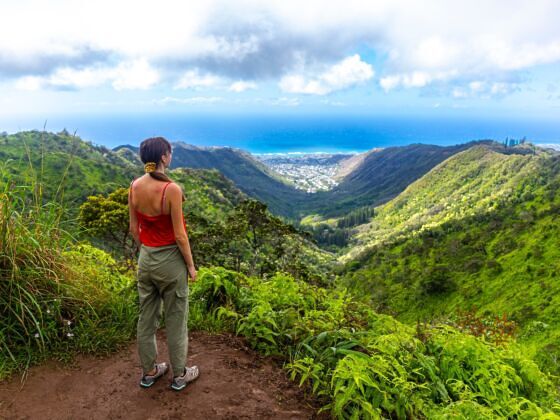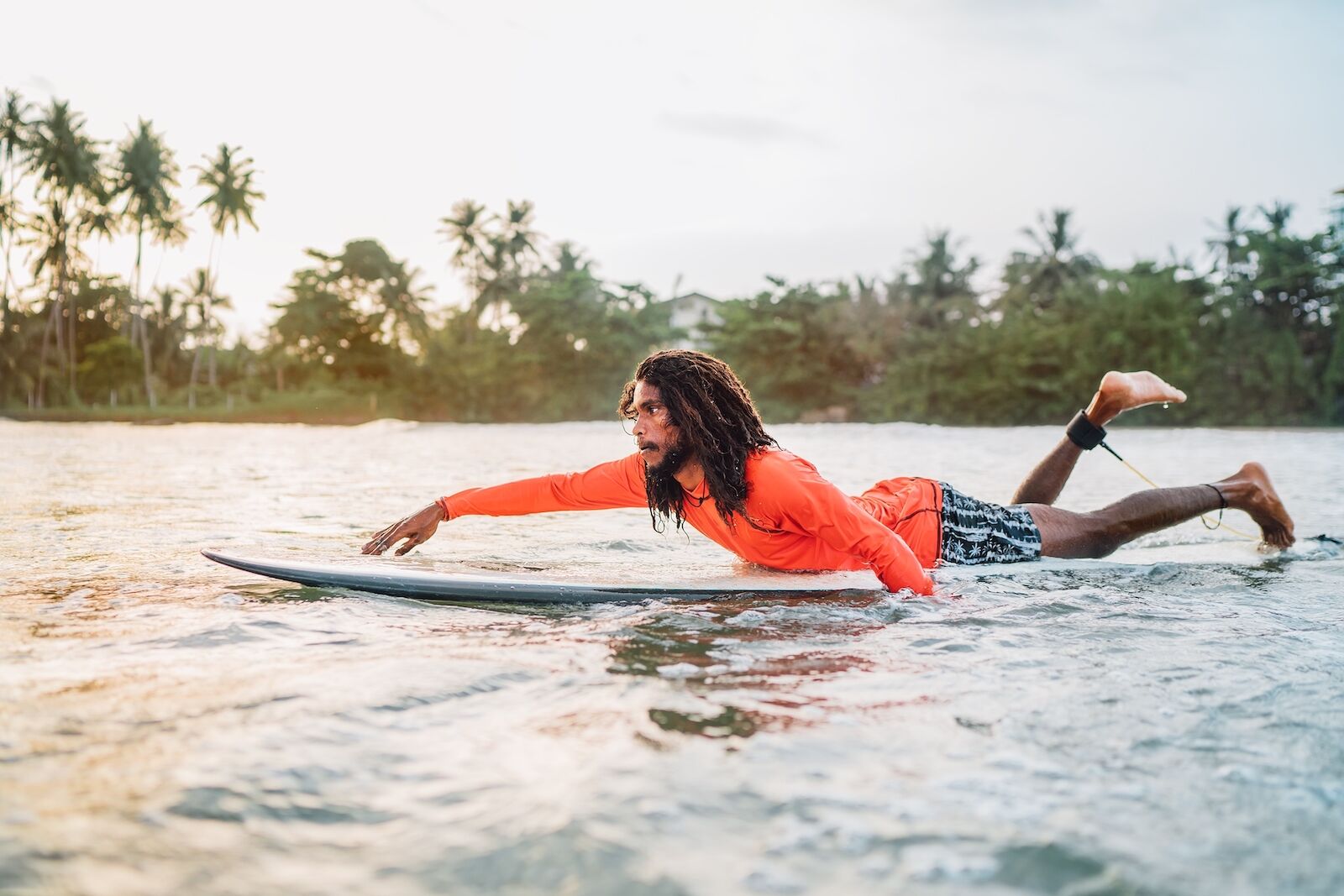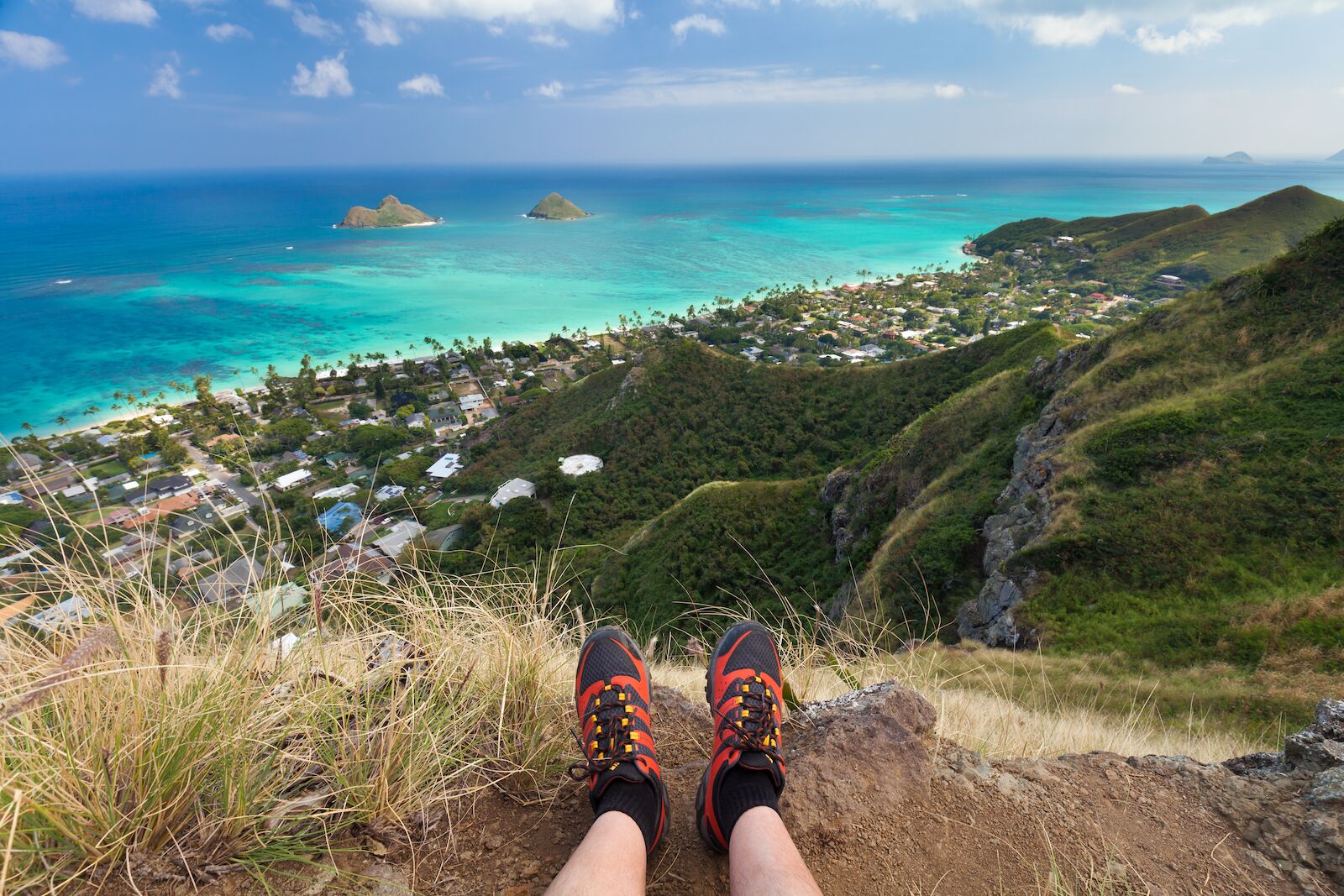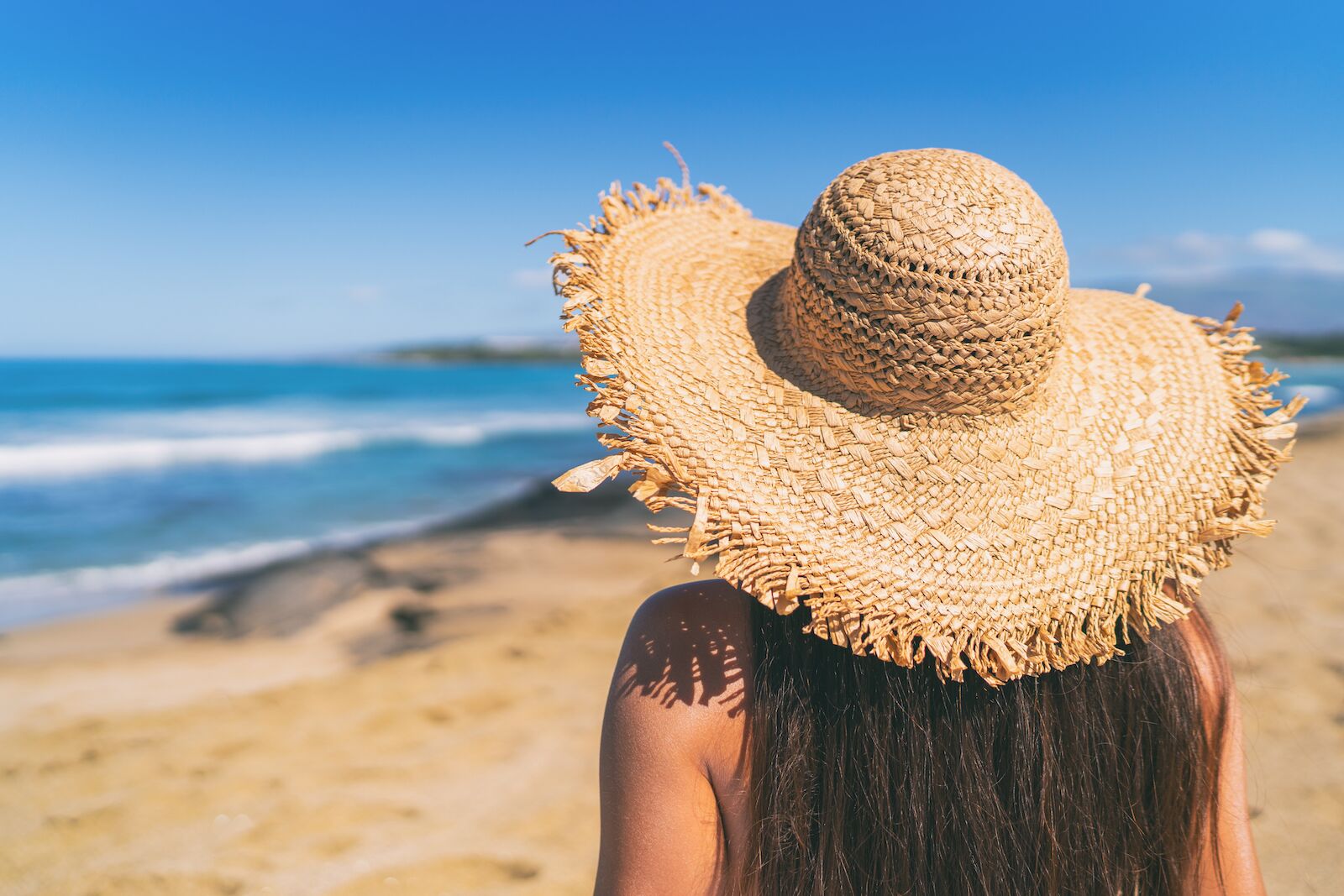If you think you can head to Hawaiʻi with nothing but a pair of flip flops, a bathing suit, and a couple of shorts and t-shirts, think again. Even if you plan to spend your entire Hawaiʻi vacation by the pool or on the beach, you’ll need to pack some essentials for you to stay healthy and comfortable. And if you have organized an active and outdoorsy trip, you’ll need to know what you should bring and what you can rent on site to make your life easier. We talked to three Hawaiʻi travel experts to get the best recommendations available on what to pack for Hawaiʻi: Brock Stratton, CEO of Kona Boys — Ocean Outfitters and Tour Company on the Big Island; Jessica Ferracane, Public Relations Specialist for Hawaiʻi Volcanoes National Park; and Tapani Vuori, General Manager of Maui Ocean Center. This packing list will ensure that you have the best time possible without having to fit half of your life in your check-in luggage.


The 18 Essential Things to Pack for a Hawai’i Vacation, According to Experts
- All you need to stay healthy while in Hawaiʻi
- Clothing you’ll want to pack for your trip to Hawaiʻi
- Footwear you can’t go without in Hawaiʻi
- Must-have accessories and miscellaneous items you need for a Hawaiʻi vacation
- Equipment you need to pack if you’re going to spend some time in the water and on the beach in Hawaiʻi
- What you need to pack if you’re going to Hawai’i Volcanoes National Park
We hope you love the items we recommend! Just so you know, Matador may collect a small commission from the links on this page if you decide to make a purchase.
All you need to stay healthy while in Hawaiʻi
Besides the usual kit you should have with you no matter where you travel (prescribed medications, over-the-counter pain relief medication for headaches, contraception, Band-Aids for blisters, COVID tests, face masks, etc.), there are specific items you need to have on hand at all times when in Hawaiʻi:
- High-SPF sunscreen: Not any sunscreen will do when you’re traveling to Hawaiʻi. Mineral, reef-safe sunscreen is the only kind of sunscreen allowed in the state. “Look at the back of your sunscreen bottle and make sure it says the active ingredient is mineral. If you see anything other than minerals, please do not buy it or bring it to Hawai‘i,” Tapani Vuori says. “All of us need to do our part in protecting our marine ecosystems.” While there are dozens of mineral, reef-safe sunscreen brands on the market, Brock Stratton recommends that you purchase Little Hands Hawaiʻi, a favorite local brand of natural mineral sunscreen. That way, you protect your skin and you support a small local business.
- Lip balm with SPF: Your lips can get burnt and get sun damage, just like the rest of your body.
- Mosquito repellent: Hawaiʻi’s warm and humid weather attracts mosquitoes, especially during the summer (May to October). Whether you partake in outdoor activities like hiking in the rainforest, spend time camping, or just enjoy sleeping with the windows open, you’ll want to protect yourself from mosquito bites. The Hawai’i Tourism Authority recommends that travelers make good use of “EPA-registered insect repellent containing 20-30 percent DEET.” The Center for Disease also suggests the oil of lemon eucalyptus if you prefer a DEET-free repellent for mosquitoes and bugs. Brock Stratton recommends “a natural bug spray to avoid introducing unnecessary chemicals into the fragile Hawaiʻi ecosystem.”
Clothing you’ll want to pack for your trip to Hawaiʻi

Photo: Soloviova Liudmyla/Shutterstock
Beyond the obvious warm-weather clothes that you’ll bring with you on your trip to Hawaiʻi, also consider packing:
- Several bathing suits: Packing several bathing suits allows you to always have a dry or clean one on hand when needed. Also, you’ll want a comfortable and chafing-free bathing suit like a one-piece or board shorts if you plan to surf or boogie board, while a bikini or swim trunks will be more appropriate when you’re dipping in and out of the water or working on your tan.
- Rash guards: Brock Stratton recommends that travelers who plan to participate in water-based activities bring rash guards with them. Rash guards are form-fitted swim shirts (sometimes known as surf shirts or surf tees) that protect surfers from the chafing that happens by spending a lot of time on boards. Rash guards can also provide excellent sun protection when they are UPF rated, whether you’re canoeing, kayaking, SUPing, or surfing.
- UPF clothing: If you plan to spend time being active outdoors, make sure to bring lightweight UPF clothing. UPF (Ultraviolet Protection Factor) is the textile equivalent of SPF (Sun Protection Factor) and is a great way to protect your skin without having to worry about reapplying sunscreen all over your body every two hours. Brock Stratton says that UPF clothing is “highly recommended as it provides a physical barrier from the sun and is superior to sunscreen”. He recommends brands like Patagonia and Anetik, both of which are available at his shop Kona Boys on the Big Island. Free Fly is another brand that sells a large variety of good-quality SPF clothing.
- Light-colored clothing: If you plan to visit Hawaiʻi in the summer and spend a lot of time hiking, not only do you need to bring mosquito repellent, but the Hawai’i Tourism Authority also recommends that you wear light-colored long-sleeved shirts, long pants, and closed shoes to keep you safe from mosquito bites. Permethrin-treated clothing is another option to keep mosquitoes at bay.
- Rain gear: You might be going to Hawaiʻi to enjoy the sun and warm weather, but don’t forget to pack a light waterproof rain jacket (like this great and packable model from Jack Wolfskin) for when it rains. Rainfall is not such a rare occurrence, especially on the island of Kauai. Note that heavy rainfalls happen more often between October and April. If you’re planning on hiking a lot, make sure you have quick-dry or waterproof pants, too.
- Warm clothing: You don’t need to pack you puffy jacket and your woolen hat, but make sure to have a warm and versatile sweater with you for when you need it, i.e. at night when it cools down, to keep warm after a sweaty hike, or if you’re going to Hawaiʻi Volcanoes National Park. Ibex’s Shak Hoodie makes for a great lightweight, thermoregulating, and moisture-wicking layer which is perfect for that purpose. Note that the coolest month in Hawaii are February and March.
Footwear you can’t go without in Hawaiʻi

Photo: Anou Kiti/Shutterstock
Besides sandals for the pool and the beach, and comfortable sneakers for every day exploring, you’ll also need:
- Hiking boots or solid hiking sandals for when you want to go for a strenuous walk or a hike. Brock Stratton explains that “a lot of visitors underestimate the terrain and are unprepared. One of the best hikes on the Big Island is the trail to Captain Cook Monument in Kealakekua Bay and all too often people have to be rescued or carried out [because they don’t have the right footwear]” Don’t be one of those travelers and pack appropriately.
- Reef booties: Brock Stratton recommends them if you want to walk along the shoreline. However, he warns that “they do not provide complete protection…the coral is often razor sharp and sea urchins will puncture through even the best booties.” When you are entering water with reefs below, it’s best to swim or snorkel.
Must-have accessories and miscellaneous items you need for a Hawaiʻi vacation

Photo: Maridav/Shutterstock
- Sunglasses: Just like you need to wear sunscreen to protect your skin, you need sunglasses to protect your eyes. Polarized sunglasses are recommended since they reduce light glare and allow you to see underwater objects clearer than regular sunglasses.
- Sunglasses retainer to keep your eyewear safe for if you’re going SUPing or kayaking
- Sun hat: Make it big and UPF rated if possible. Brock Stratton explains that sun hats not only “protect your face but also your scalp as the island rays can penetrate through most hair”.
- A reusable water bottle and an insulated mug: Cutting down the amount of waste we generate, whether plastic or paper, is essential, wherever we go. Also, always having a filled-up water bottle with you will help you stay hydrated in the heat of Hawaiʻi.
- Binoculars: Indispensable if you want to spot birds, whales, and even to observe volcanoes, explains Brock Stratton.
Equipment you need to pack if you’re going to spend time in the water and on the beach in Hawaiʻi
While you can bring your own equipment for surfing, snorkeling, SUPing, Brock Stratton explains that you can easily rent all of it in local shops. That way, your packing is simplified and you support small local businesses. The same goes for chairs and umbrellas.
If you’re an avid SUPer and want to bring your own board, just make sure not to bring an inflatable one. Brock Stratton says they are not fit for Hawaiʻi’s winds and can easily get damaged on rocks and reefs.
What you need to pack if you’re going to Hawai’i Volcanoes National Park

Photo: NPS Photo/J.Wei
Jessica Ferracane is adamant that a safe and enjoyable time at Hawai’i Volcanoes National Park should include:
- A rain jacket
- Sturdy closed-toe shoes or hiking boots. She explains that many of the park’s “trails wind through or are formed on hardened lava flows. Lava contains silica (glass) and can slice bare skin.”
- Long pants, both to stay warm and to “protect your legs from lava.”
- A hat and sunglasses, which you should take everywhere with you while in Hawai’i
Jessica Ferracane explains that “many visitors to Hawaiʻi Volcanoes National Park do not realize that the park entrance, the Kīlauea Visitor Center, and most of the sites they see are at the 4,000-ft elevation, at the summit of Kīlauea. Although it can be quite pleasant, this area is often rainy and foggy and is a good 15 to 20 degrees cooler than sea level.” That means you should also pack a warm hoodie.